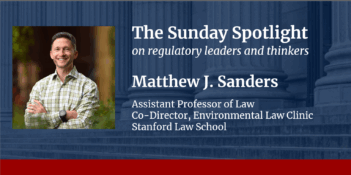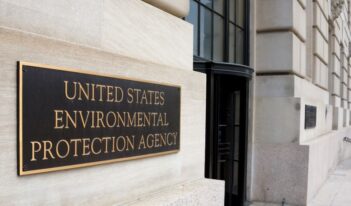
A lower ozone standard means more benefits for Americans.
Industry groups and Republicans in Congress are calling the proposed air quality standard to cut back on smog (or ground-level ozone) the most expensive regulation ever. Is this a case of the U.S. Environmental Protection Agency (EPA) burdening the economy with an overly stringent standard, as the rule’s detractors would like the public to believe? The data suggest the opposite is true: the economic benefits of cutting back on smog far outweigh the costs. In fact, the benefits are so great that an even more stringent rule would be economically justified.
The EPA is barred by Supreme Court precedent from considering costs when setting the public health standards under the Clean Air Act, known as the National Ambient Air Quality Standards (NAAQS). The Court made clear that it does not want the stringency of these standards to be compromised by cost considerations. Nevertheless, every time the agency amends such a standard, it collects and publishes information on the economic costs and benefits.
The EPA sets air quality standards for six major pollutants. It turns out that for the current NAAQS for lead, nitrogen dioxide, sulfur dioxide, and particulate matter, benefits have exceeded costs despite the Supreme Court’s constraints on cost consideration (the carbon monoxide standard did not include enough information to make this assessment). Moreover, further strengthening the standards would have increased social welfare (that is, social benefits minus social costs). Thus, ironically, by barring the consideration of costs, the Supreme Court’s approach may have led to suboptimally lax standards. We explore these matters in much more detail in an article in the New York University Law Review published this past fall.
The ozone standard seemed to be an exception to this trend, based on 2008 cost projections. But the EPA’s proposed rule for revising the ozone standard, released this past December, now paints a different picture. Following advice from an independent panel of scientists, the EPA has proposed to lower the ozone standard from 75 parts per billion (ppb) to a level within the range of 65 to 70 ppb. Industry groups criticized the rule’s costs months before it was even proposed. But, industry’s criticism fails to mention a central consideration: the EPA estimates that the public health benefits of the rule will substantially exceed the costs.
The reason that ozone control makes economic sense now is that the costs of control keep falling. In 2008, the agency estimated compliance costs of moving from the George W. Bush standard of 75 ppb to a tighter rule of 65 ppb. The EPA found that, at that time, the costs would have been around $32 to $44 billion. In the new proposal, by contrast, costs for this level of stringency are estimated at less than $17 billion. Projected benefits remain comparable to the 2008 analysis, at more than $30 billion annually. As a consequence of the lower cost projections, the new rule is easily cost-benefit justified and will likely result in at least $13 billion in annual net benefits for Americans.
What accounts for the falling costs? Not surprisingly, new technologies are the answer. The EPA states that its new estimates are based on “additional known controls, which are less expensive per ton” than the agency’s earlier guesses. These new, cheaper controls include low-emission combustion technologies and solvent substitution at pollution sources. The ozone standard fits a common pattern in regulatory economics wherein compliance cost estimates, whether projected by industry or government, often exceed the actual costs. This phenomenon is often due to overly conservative assumptions about innovation and technological adaption.
If the EPA seeks to maximize social welfare, it should set the standard at the low end of the 65-70 ppb window it is exploring, or even lower (the agency is also accepting comments on a standard as low as 60 ppb). The EPA’s projections for California, which has a somewhat different compliance timeline than other states, show that this lower 60 ppb standard would be vastly preferable, with net benefits of $2.4 billion annually, compared to $1.6 billion for a 65 ppb standard and $750 million for a 70 ppb standard (using mid-point cost and benefit projections).
A similar pattern emerges for the other 49 states, with the net benefits of a 65 ppb standard ($13.5 billion) far exceeding those of a 70 ppb standard ($5.8 billion). Net benefits for a 60 ppb standard are projected at $13 billion, not counting California. This 60 ppb standard is preferable once the net benefits from all 50 states are considered.
What does all this math ultimately add up to? This rule, along with the other NAAQS that the EPA has published recently, would generate even greater quantified, measured, and monetized net benefits if they were even more stringent than proposed. As we all see and hear the industry lobbying media barrage against the ozone rule in coming months, this message is something we should keep at the front of our minds.





